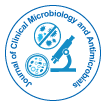

Perspective - (2025)Volume 9, Issue 1
Antimicrobial resistance (AMR) is emerging as one of the most critical global health challenges of the 21st century. The misuse and overuse of antibiotics in clinical and agricultural settings have led to the proliferation of resistant strains, threatening the efficacy of once-reliable treatments. According to the World Health Organization, AMR is responsible for over 1.27 million deaths annually and continues to rise with alarming momentum. In countries like Japan, while advanced healthcare systems have helped mitigate some of the burden, AMR remains a growing concern, particularly in hospital-acquired infections and community settings. Resistant strains such as methicillin-resistant Staphylococcus aureus (MRSA), vancomycin-resistant enterococci (VRE), and carbapenem-resistant Enterobacteriaceae (CRE) are increasingly reported, posing serious threats to immunocompromised patients and complicating routine medical procedures.
The drivers of antimicrobial resistance are multifactorial. Unregulated antibiotic dispensing, incomplete antibiotic courses by patients, and insufficient diagnostics in many healthcare settings have contributed to the selection pressure that fosters resistance. Moreover, antibiotic use in animal husbandry for growth promotion and disease prevention further contributes to the environmental reservoir of resistant genes. With the globalization of trade and travel, resistant pathogens can cross borders rapidly, making AMR a transnational issue that requires a coordinated international response.
Surveillance systems play a pivotal role in understanding resistance patterns and guiding appropriate antibiotic policies. In Japan, the Japan Nosocomial Infections Surveillance (JANIS) system has been instrumental in tracking hospital-acquired infections and their susceptibility profiles. However, surveillance in community settings remains limited, and integration between local and national databases needs further enhancement. Accurate, timely data is vital not only for recognizing outbreaks but also for informing empirical therapy, policy-making, and research funding allocation. The lack of harmonized global surveillance systems has led to data gaps, especially from low- and middle-income countries, impeding a comprehensive understanding of AMR dynamics.
Antimicrobial stewardship (AMS) has emerged as a cornerstone strategy to combat AMR. Stewardship programs involve coordinated interventions designed to improve and measure the appropriate use of antimicrobial agents. These programs promote the selection of optimal drug regimens, doses, duration, and routes of administration. AMS is increasingly being adopted in tertiary care hospitals, with infectious disease specialists, pharmacists, and microbiologists working in tandem to monitor prescriptions and outcomes. Educational efforts targeted at both clinicians and patients are essential to foster a culture of judicious antibiotic use. Nevertheless, implementation in smaller clinics and rural hospitals is still inconsistent due to resource limitations and the lack of trained personnel.
An often-overlooked component of the AMR response is public awareness. Misconceptions about antibiotics, including the belief that they are effective against viral infections, persist among patients. Campaigns to educate the public on the risks of misuse and the importance of completing prescribed courses are necessary to change behavior. Furthermore, promoting vaccination can reduce the incidence of infections, thereby indirectly decreasing the demand for antibiotics. Research into new antimicrobials, alternative therapies such as bacteriophages and antimicrobial peptides, and diagnostic innovations are also crucial, although such initiatives require substantial investment and time.
The COVID-19 pandemic has added a new layer of complexity to the AMR landscape. Increased antibiotic use in COVID-19 patients, often in the absence of bacterial co-infections, has raised concerns about accelerating resistance. Additionally, disruptions in healthcare systems have impeded surveillance and stewardship activities. These developments underscore the need for robust, adaptable systems that can maintain essential AMR strategies even during global crises.
In conclusion, antimicrobial resistance poses a formidable threat to global health, jeopardizing the progress made in modern medicine. The key to addressing this threat lies in strengthening antimicrobial stewardship programs and establishing comprehensive surveillance systems that can guide policy and clinical decisions. Japan’s experience illustrates the importance of coordinated, multidisciplinary approaches, but also highlights gaps that need urgent attention, particularly in community surveillance and public education. Combating AMR will require sustained political commitment, cross-sectoral collaboration, and global solidarity. Without decisive action, we risk entering a post-antibiotic era where common infections become untreatable and routine surgeries carry significant mortality risks. The time to act is now.
Citation: Tanaka K (2025). Rising Threat of Antimicrobial Resistance: Urgent Need for Stewardship and Surveillance. J Clin Microbiol Antimicrob.09:214.
Received: 03-Mar-2025, Manuscript No. JCMA-25-37623; Editor assigned: 06-Mar-2025, Pre QC No. JCMA-25-37623 (PQ); Reviewed: 20-Mar-2025, QC No. JCMA-25-37623; Revised: 27-Mar-2025, Manuscript No. JCMA-25-37623 (R); Published: 03-Apr-2025 , DOI: 10.35248/ JCMA.25.09.214
Copyright: © 2025 Tanaka K. This is an open-access article distributed under the terms of the Creative Commons Attribution License, which permits unrestricted use, distribution, and reproduction in any medium, provided the original author and source are credited.